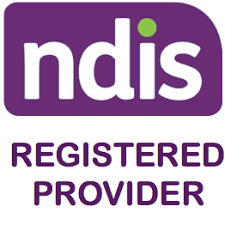Apps
Definition of Stroke
A stroke is caused by a rupture or blockage in the blood supply to the brain. A stroke is also called a cerebrovascular accident (CVA).
Causes of Stroke
A stroke mainly occurs when the flow of blood or supply of blood to a section of the brain is interrupted suddenly and/or when a blood vessel in the brain bursts, leaking blood into the spaces that surround brain cells. When blood flow to the brain stops or is interrupted it means the brain cells are not receiving blood oxygen and nutrients critical for their survival causing brain cells to die. It has also been noted that one of the major risks of stroke is high blood pressure or hypertension (Chong, 2020; NINDS; 2021; Sacco et al., 2013).
Types of Stroke
There are three main types of strokes. These are:
- Ischemic Stroke – these are strokes that occur when the flow of blood through the artery that supplies oxygen-rich blood to the brain becomes blocked, mainly due to blood clots.
- Haemorrhagic Stroke – this is a type of stroke that happens when a brain artery breaks open (ruptures) and/or leaks blood and the leaked blood then causes pressure on the brain cells, causing damage to them. There are two main types of hemorrhagic stroke, namely:
- Intracerebral haemorrhage: this is the most prevalent type of hemorrhagic stroke and it occurs when a brain artery causing blood to flood surrounding tissue.
- Subarachnoid haemorrhage; this is a less common type of hemorrhagic stroke. It refers to bleeding in the area between the brain and the thin tissues that cover it.
- Transient Ischemic Attack (TIA) – this kind of stroke is sometimes called a “mini-stroke” because it mainly occurs when the flow of blood to the brain is blocked briefly or for a short period of time usually only a few minutes.
(Chong, 2020; NINDS; 2021; Sacco et al., 2013).
Symptoms of Stroke
Some of the most common symptoms of a stroke are:
- Sudden difficulty walking, loss of balance, lack of coordination or sudden dizziness.
- Sudden difficulty speaking, sudden confusion or challenges understanding speech.
- Sudden difficulty or trouble with sight or seeing in one or both eyes
- Sudden numbness, strange sensations or feeling of weakness in some parts of the body such as the arm(s), leg(s) and face or paralysis, especially on one side of the body.
- Sudden severe headache with no identifiable cause or trigger.
(Chong, 2020; NINDS; 2021; Sacco et al., 2013).
References
Chong, Ji Y. (2020, April). Overview of Stroke. Merck Sharp & Dohme Corp.
Sacco, R.L., Kasner, S.E., Broderick, J.P., Caplan, L.R., Connors, J.J., Culebras, A., Elkind, M.S.V., George, M.G., Hamdan, A.D., Higashida, R.T., Hoh, B.L., Janis, L.S., Kase, C.S., Kleindorfer, D.O., Lee J-M., Moseley, M.E., Peterson, E.D., Turan, T.N., Valderrama, A.L., & Vinters, H.V. (2013). An Updated Definition of Stroke for the 21st Century. American Heart Association/American Stroke Association, Stroke, 44(7), 2064-2089.
Behaviour Help
If you are supporting an individual with this diagnosis, please refer to our services and resources. They aim to help children, adolescents and adults achieve better communication, social, emotional, behavioural and learning outcomes. So whether you are wanting guidance on parenting, teaching, supporting or providing therapy, Behaviour Help is at hand.
Note: This is not an exhaustive list of all the possible causes, symptoms and types but some general information that can be further explored. Based on what you have read if you have any concerns about an individual, please raise them with the individual/s. The caregiver can then raise these concerns with their local doctor who can provide a referral to the relevant professional (e.g. paediatrician, psychologist, psychiatrist, allied health professional and learning specialists) for diagnosis and treatment if appropriate.
Get Started with Behaviour Help App
Assess-manage-prevent behaviours of concern efficiently and effectively with the Behaviour Help App.

